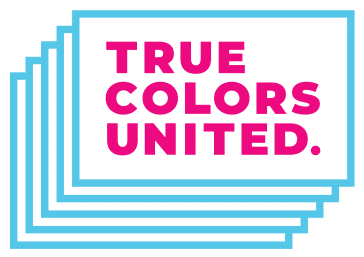What does it mean to be truly inclusive and affirming? This is a question that many folks face when working with LGBTQ youth. Whether one is providing direct care, health care services, referrals, advocacy, or support for LGBTQ young people, affirming young people is of critical importance. What are some ways that we can help ensure young people don’t just feel accepted for who they are, but are truly validated in their identities?
One of the first steps to creating an inclusive and affirming environment is to become educated about the range of sexual orientations and gender identities that are a reality for the LGBTQ youth community. The Guide for Understanding, Supporting, and Affirming Lesbian, Gay, Bisexual, Transgender, Questioning, Intersex, and Two-Spirit (LGBTQI2-S) Children, Youth, and Families provides accessible definitions related to LGBTQ identities. Additionally, it is important that we examine commonly held myths about gender identity and sexual orientation to ensure that these myths aren’t impeding our ability to be inclusive and affirming. The guide gives examples of these myths, provides facts to counter the myths, as well as some supportive advice around these myths. The report breaks down the coming out process for youth, highlights the importance of family and alternative family structures, and provides tips for supporting LGBTQI2-S youth.
A Guide for Understanding, Supporting, and Affirming LGBTQI2-S Children, Youth, and Families
Some of our favorite excerpts are below:
MYTHBUSTERS
MYTH: “Gay and bisxual people who keep their sexual orientation to themselves fit into society better.”
FACT: Young people who are LGBTQI2-S and whose identity has been openly accepted and affirmed by friends, family members, and their community are more likely to be healthy, happy, and successful.
MYTH: “Being gay or bisexual is a dysfunction that can be cured.”
FACT: In 2009, the American Psychological Association adopted a resolution stating that “mental health professionals should avoid telling clients that they can change their sexual orientation through therapy or other treatments.” Identifying as LGBTQI2-S is not a mental health condition or mental illness. Identifying as LGBTQI2-S cannot be cured by psychotherapy or other means. However, mental health challenges can be brought on by victimization, rejection, isolation, and internal struggles with self-acceptance.
**It is important to note that LGBTQI2-S youth are routinely pathologized in our society, especially those that identify as transgender or genderqueer and those with diverse gender expressions.
What does family look like?
Family and support networks are critical in the coming out process for LGBTQI2-S youth. But what family looks like may vary from one young person to another. The guide highlights the importance of support networks like adoptive family, kinship family, biological family, step family, and families of choice (people not biologically or legally related to the young person).
Tips for Supporting Children and Youth:
-
Assess and reflect on your awareness, attitudes, beliefs, and behaviors toward young people who are LGBTQI2-S
-
Be an ally by supporting young people who are LGBTQI2-S
-
State your support and expectations
-
Be guided by young people and respect their coming out process
-
Use appropriate and inclusive language
-
Display and share symbols, images, and resources that accept and affirm identity of young people who are LGBTQI2-S
-
Recognize that bias experienced by young people who are LGBTQI2-S may contribute to anxiety, depression, other mental health challenges, and/or substance use
- Acknowledge and encourage participation of significant others and family of LGBTQI2-S children and youth
